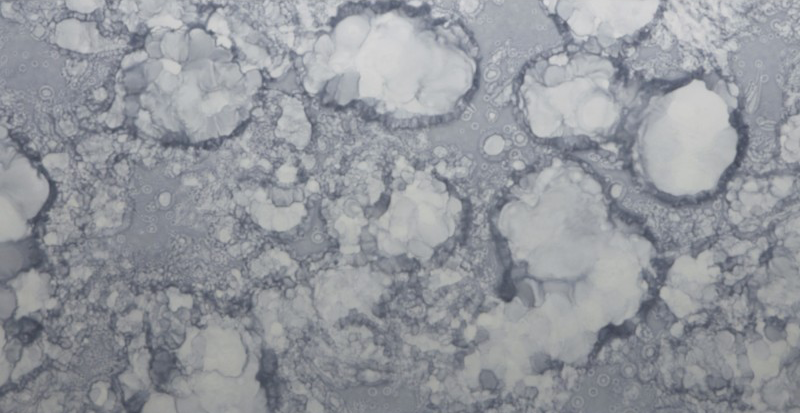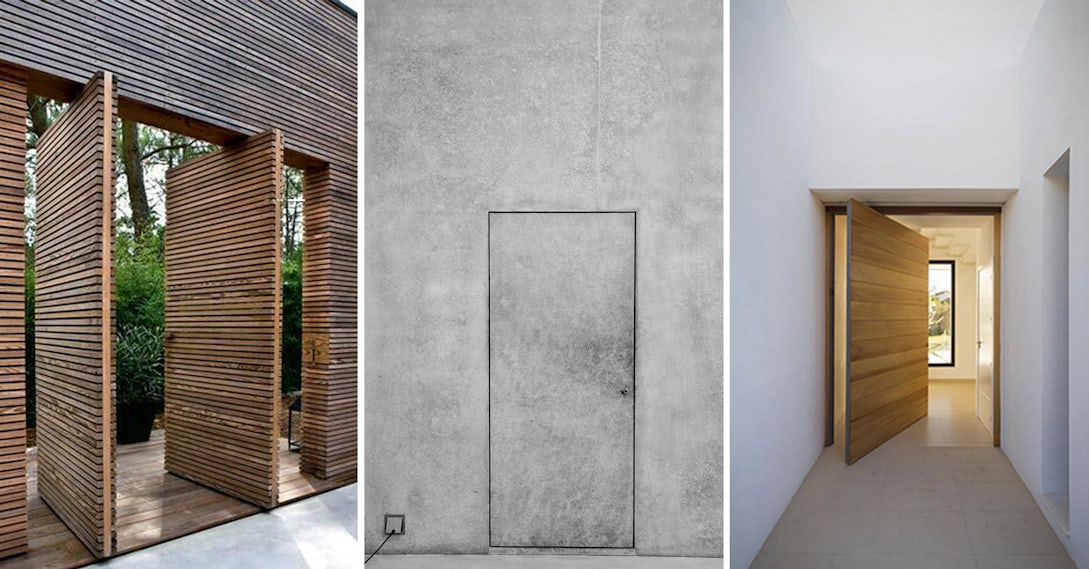Call for entries: The 14th Architizer A+Awards celebrates architecture's new era of craft. Apply for publication online and in print by submitting your projects before the Final Entry Deadline on January 30th!
Years before Thom Mayne founded Morphosis Architects, and decades before he became a Pritzker Prize laureate, he began cultivating a reputation as a maverick, the “bad boy” of architecture. Through his acerbic writings and radical unbuilt projects, he inspired a generation of young Southern Californian architects to buck convention and push the boundaries of building design. Always ahead of the curve, it wasn’t until later in life that digital modeling and computer-aided manufacturing finally caught up with his avant-garde style.
Today, through long-standing relationships with companies like Zahner, a leading producer of architectural metal, Morphosis is able to bring their futuristic designs to fruition. Together, they create otherworldly buildings which appear to have landed in place, like spacecrafts making a pit stop on an intergalactic voyage. These extraordinary collaborations are a testament to what can be achieved when design and fabrication processes are inextricably intertwined. As you search for manufacturers for your next project, check out the metallic masterpieces of Morphosis and Zahner:
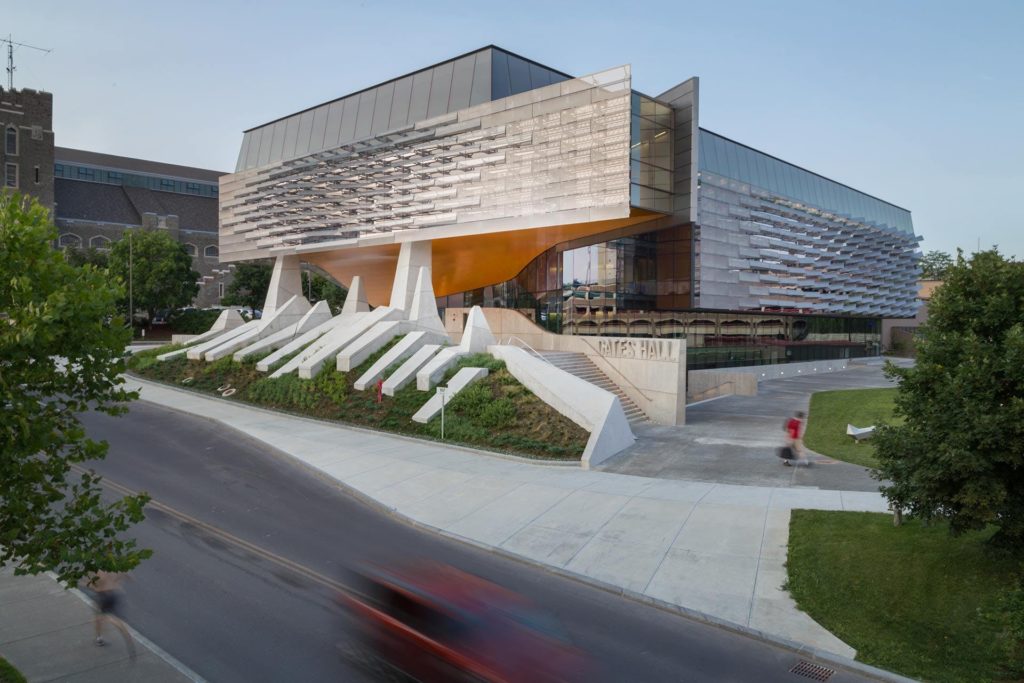
Photos by Roland Halbe; via Morphosis Architects.
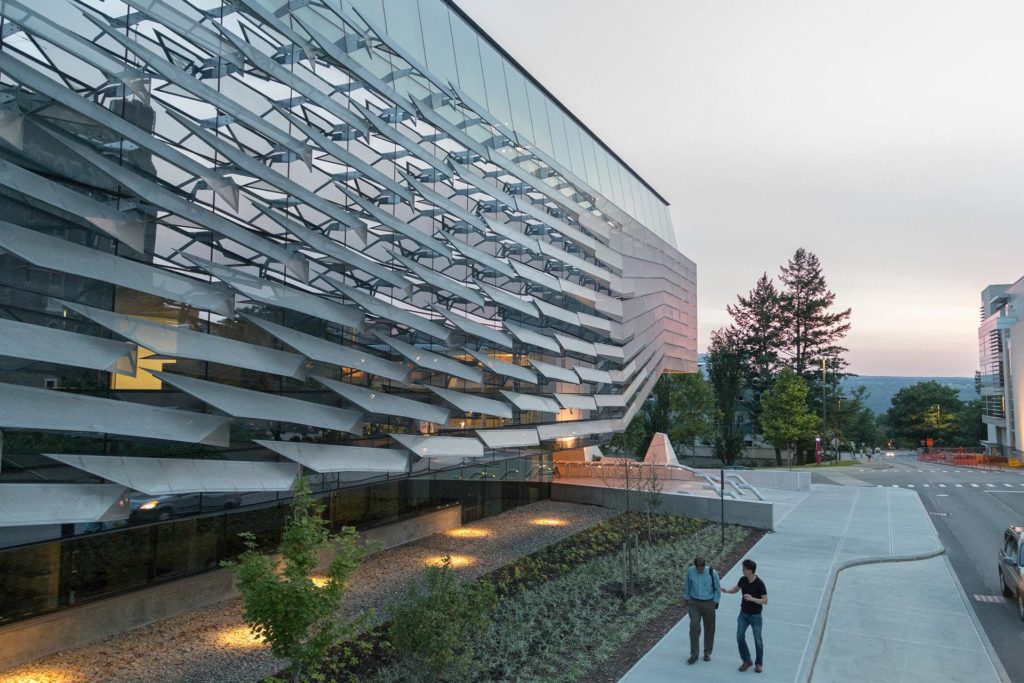
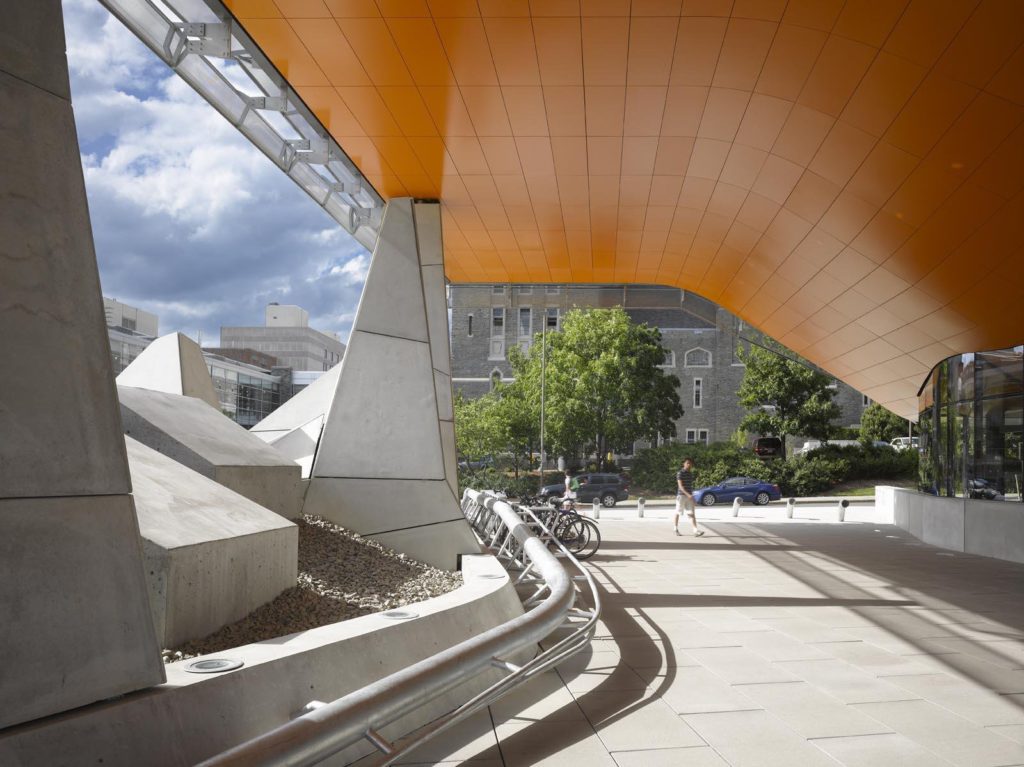
Gates Hall by Morphosis Architects, Ithaca, N.Y., United States
Metal Cladding by Zahner
Gates Hall, the new home of Cornell University’s Computer Science Department, was designed to express the building’s high-tech program while exceeding Cornell’s strict energy performance standards. Its façades are clad in orange-fritted glazing and are shielded from direct sunlight by an angular weave of perforated steel panels.
In total, there are 90 unique panel configurations which are arranged to generate a sense of movement across the façades, like a veil blowing in the breeze. This was achieved by affixing each panel to the curtain wall with three galvanized steel brackets, allowing for reduced frame widths and paper-thin profiles. In contrast to these crisp angles, the underside of the canopy features a curving soffit, clad in bright orange aluminum, which gently guides students toward the main entrance.
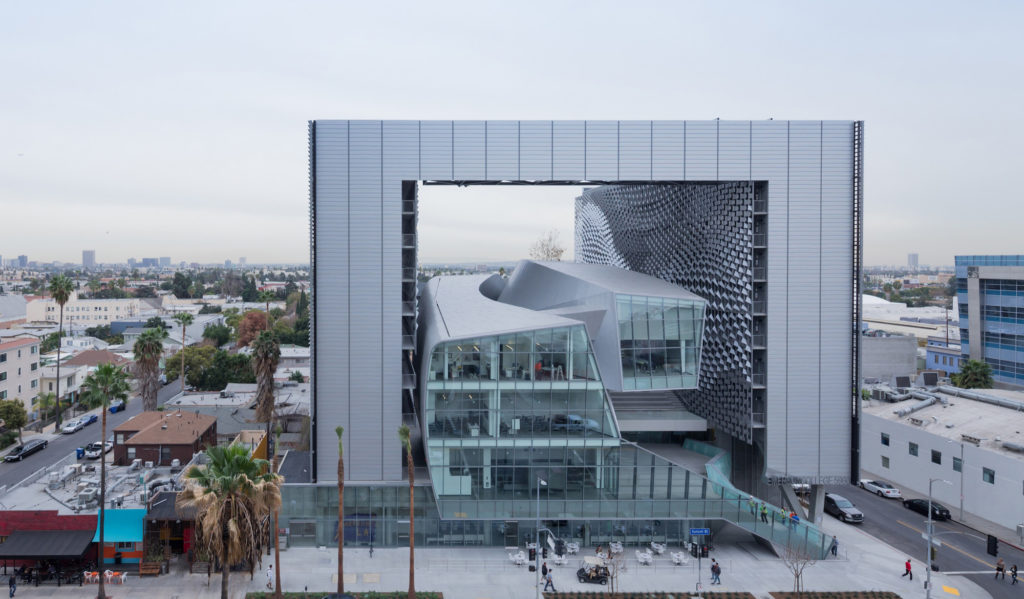
Photos by Roland Halbe and Iwan Baan; via Morphosis Architects.
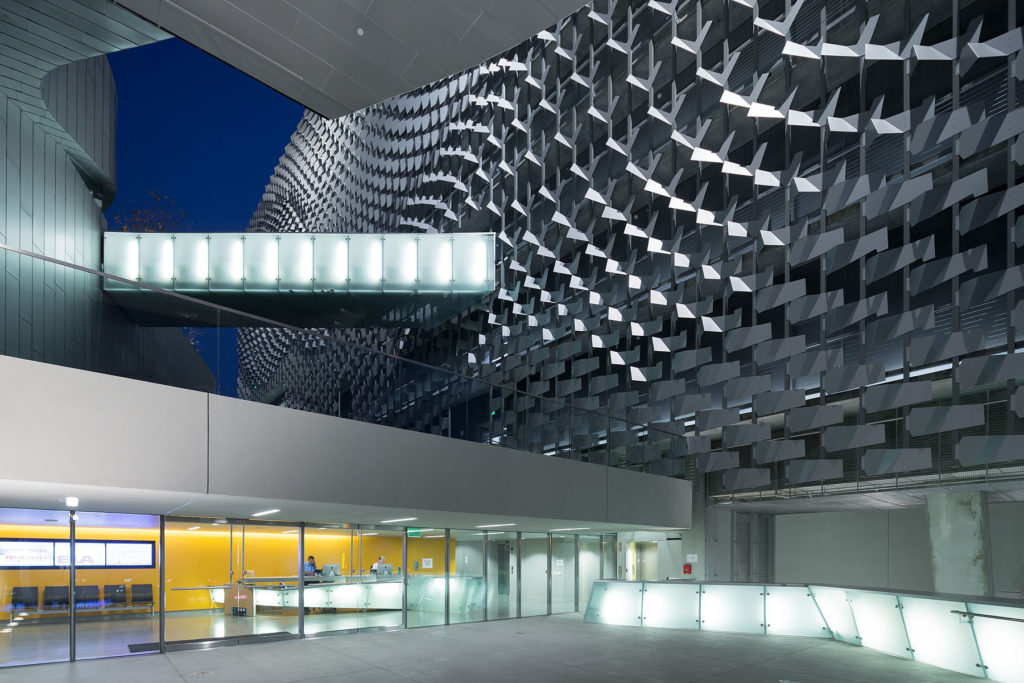
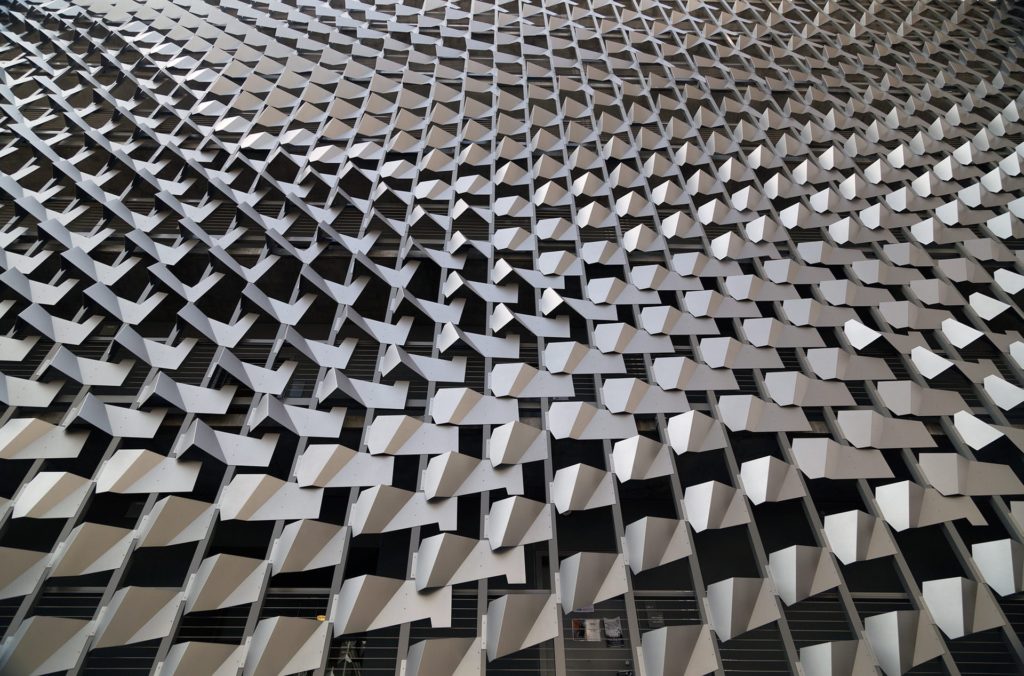
Emerson College LA by Morphosis Architects, Los Angeles, Calif., United States
Metal Cladding by Zahner
Emerson College LA, the West Coast counterpart of Emerson College in Boston, is a performing arts and film center located in downtown Los Angeles. The sinuous school building is framed on either side by rectilinear towers of student housing, as the architects explain: “the center finds a provocative precedent in Hollywood film studios, where outwardly regular facades house flexible, fantastical spaces within.”
In keeping with this theme, the inner façades of the student residences are afforded privacy by undulating metal screens, reminiscent of theater curtains. These screens are composed of thousands of aluminum louvers, bent into 17 origami-like shapes and staggered to create wavy profiles. The outer façades appear more restrained but are equally innovative, featuring horizontal aluminum fins which automatically adjust throughout the day to minimize heat gain while maximizing daylight.
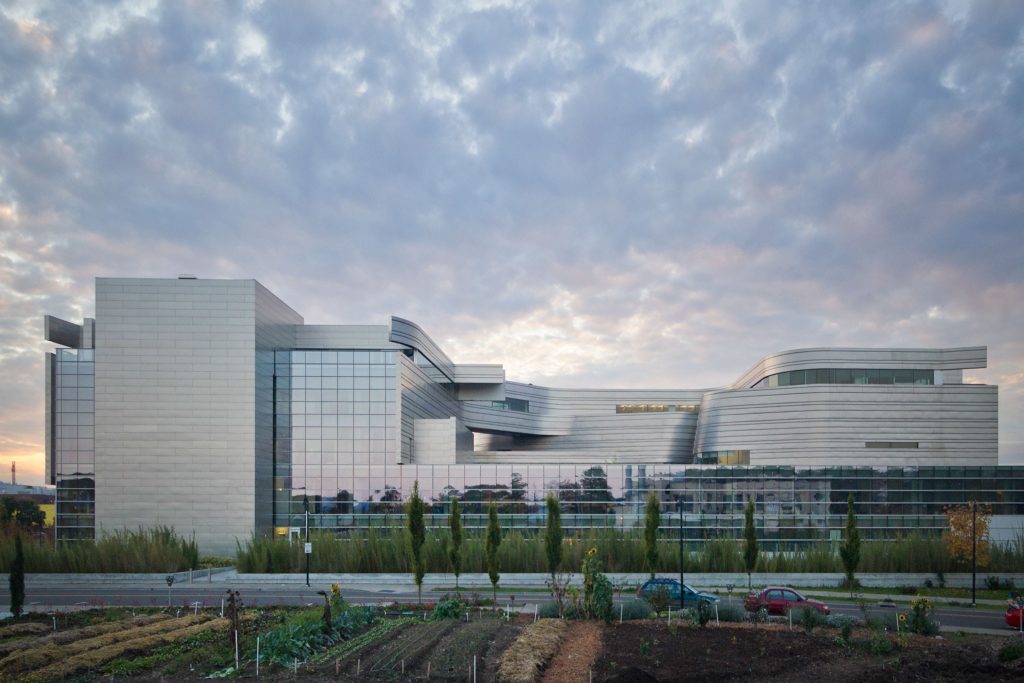
Photos via A. Zahner Company.
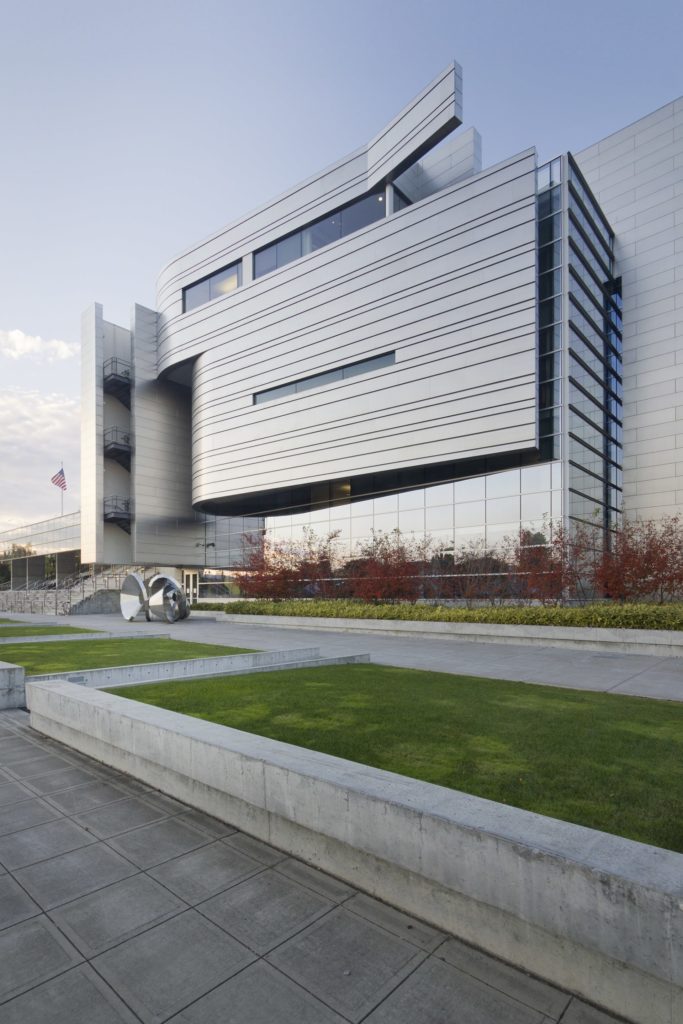
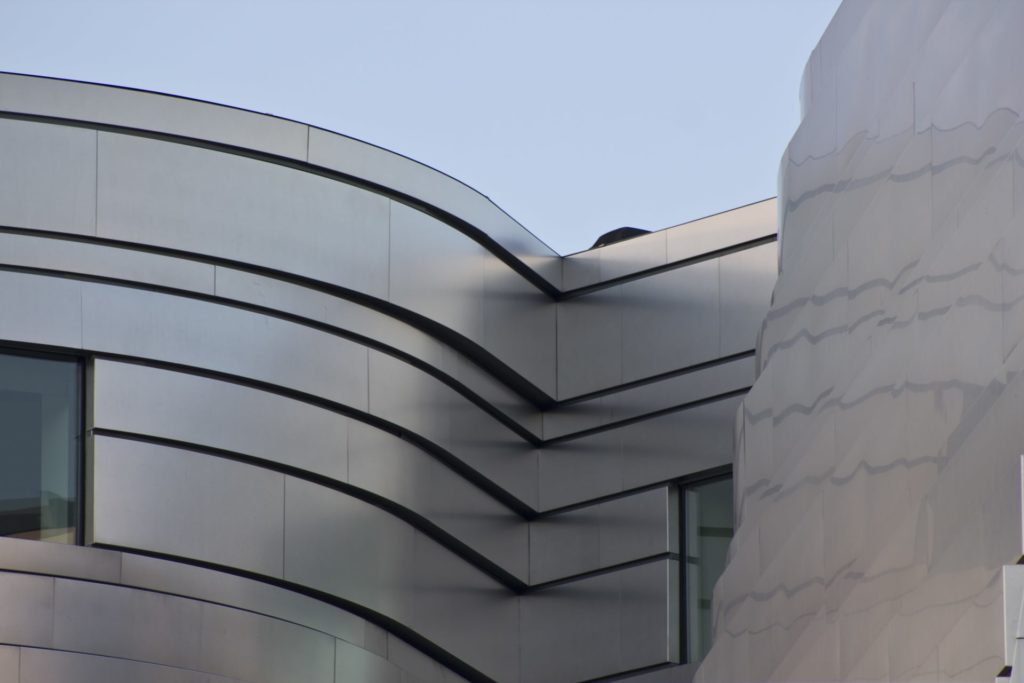
Wayne Lyman Morse United States Courthouse by Morphosis Architects, Eugene, Ore., United States
Metal Cladding by Zahner
This United States courthouse, named after the late Senator Wayne Lyman Morse, was the first collaboration between Zahner and Morphosis, and their largest to date. Despite its massive size and the 110,000 square feet of stainless steel cladding its exterior, the building became the first Federal courthouse to achieve LEED Gold certification.
The secret is in the steel’s angel hair finish which was created by scarifying its surface with a series of abrasive discs. The resulting texture disperses sunlight more evenly across the metal, preventing hot spots and making it easier to control interior temperatures. The panels were installed in overlapping layers with deep reveals between courses, producing linear shadows which accentuate the building’s curves and provide a contrast to their “non-directional” finish.
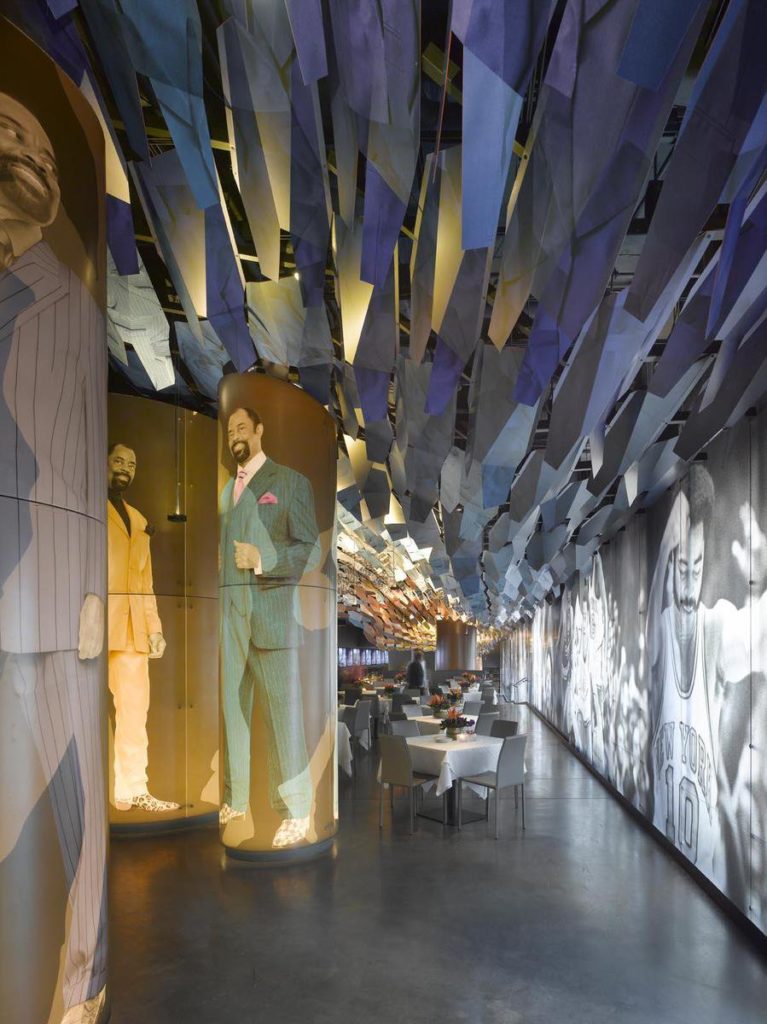
Photos by Roland Halbe; via Morphosis Architects.
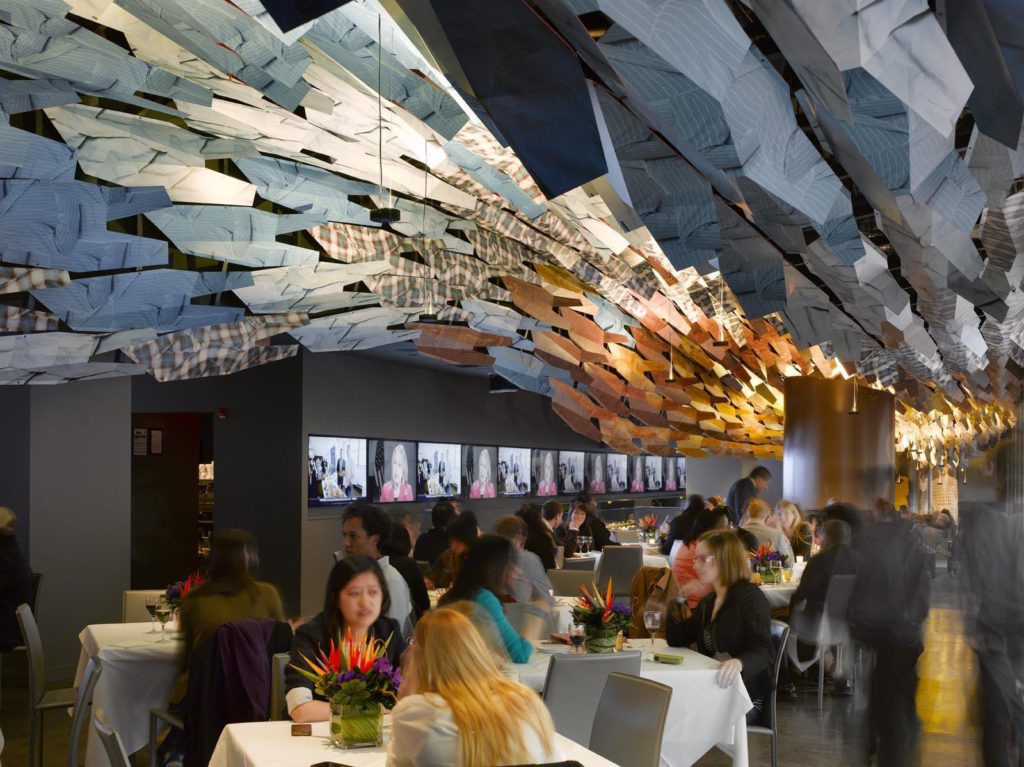
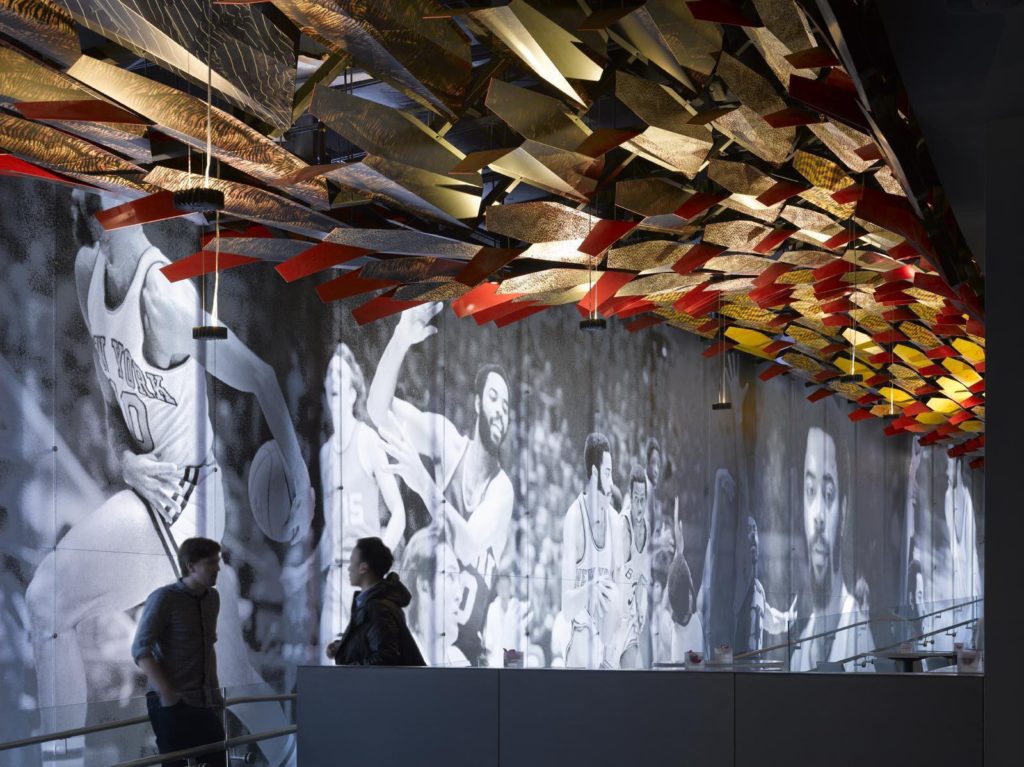
Clyde Frazier’s Wine and Dine by Morphosis Architects, New York, N.Y., United States
Metal Ceiling by Zahner
Walter “Clyde” Frazier, former Knicks player and current basketball commentator, is perhaps best known for his eccentric wardrobe. In fact, it was his brightly colored, striped, plaid and animal print suits that inspired the design of Clyde Frazier’s Wine and Dine, his sports-themed bar and restaurant in Manhattan’s Hell’s Kitchen neighborhood.
The long interior is defined by a continuous suspended ceiling, over 170 feet in length, which is composed of hundreds of folded aluminum plates. At first glance, this rolling ceiling resembles a school of tropical fish swimming overhead. Upon closer inspection, each plate features a pattern from one of Frazier’s suits, which has been captured by a high-resolution camera and printed onto an adhesive film. While the variations in color and the spacing between plates create “the illusion that every part is unique,” in reality, the ceiling is based on a highly repetitive pattern of only six different shapes.
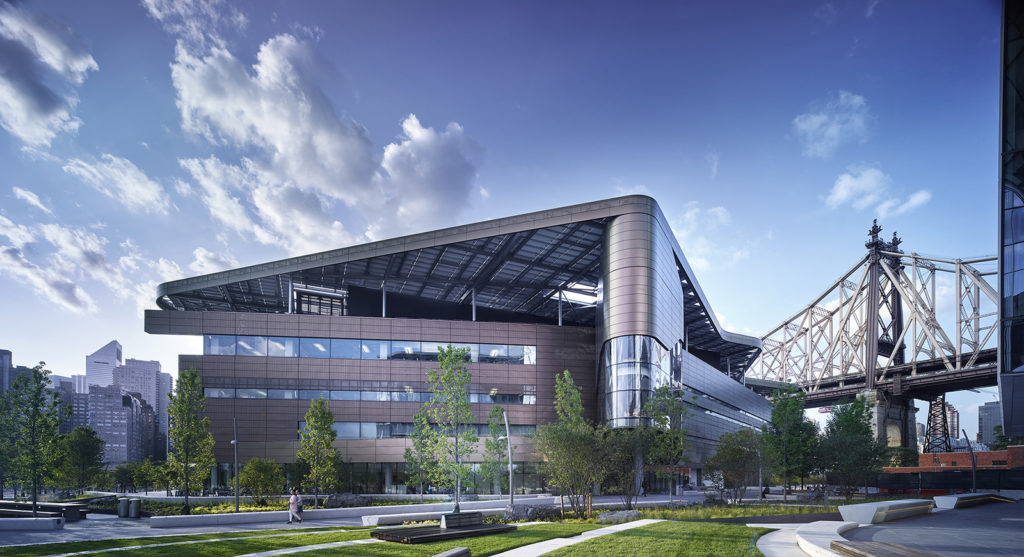
Photos by Matthew Carbone and A. Zahner Company; via Morphosis Architects.
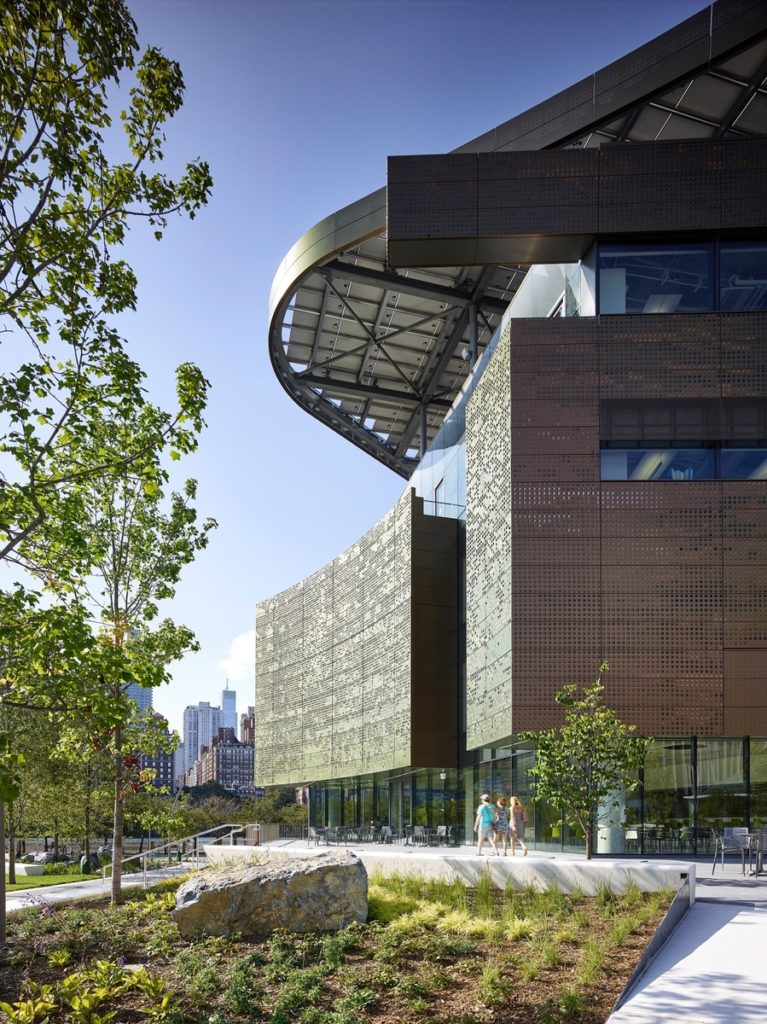
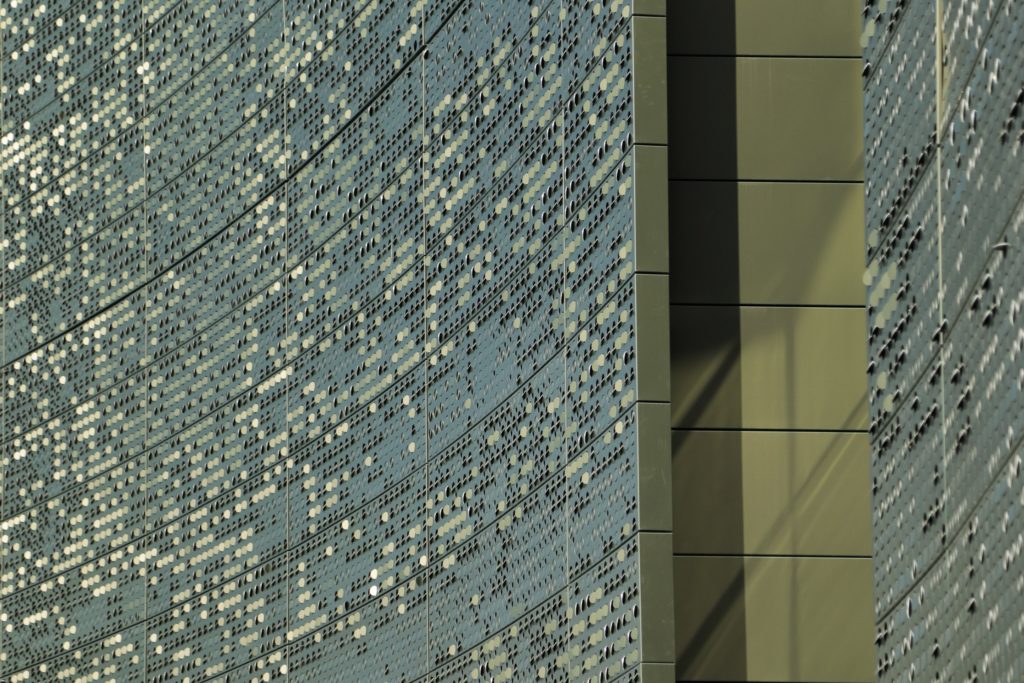
Bloomberg Center by Morphosis Architects, New York, N.Y., United States
Metal Cladding by Zahner
The Bloomberg Center is the flagship building of Cornell’s emerging New York City campus. It occupies a prominent waterfront site on Roosevelt Island, with Brooklyn on one side and Manhattan on the other. The architects drew upon these spectacular views, as well as views of Cornell’s idyllic Upstate campus, to generate an abstract façade of pixelated aluminum, as they explain: “Facing the city, the Bloomberg Center’s west facade registers the image of the Manhattan skyline… Along the campus’ main entry, the east facade registers an image of Ithaca’s famous gorges.”
First, the selected images were converted into pixel maps and fed into CNC-milling machines which translated them into grids of perforated aluminum tabs. Next, an automated arm —which was built by Cornell Students from a repurposed welding robot — rotated the tabs to different angles in accordance with their location on the pixel map. The varied angles of rotation cause the façades to shimmer differently throughout the day. This effect was amplified by coating the aluminum with an iridescent polymer which shifts from a blue-green patina in the morning to a purplish bronze in the afternoon. The result is a dynamic building that never appears the same twice, as if in a state of perpetual metamorphosis.
Call for entries: The 14th Architizer A+Awards celebrates architecture's new era of craft. Apply for publication online and in print by submitting your projects before the Final Entry Deadline on January 30th!

